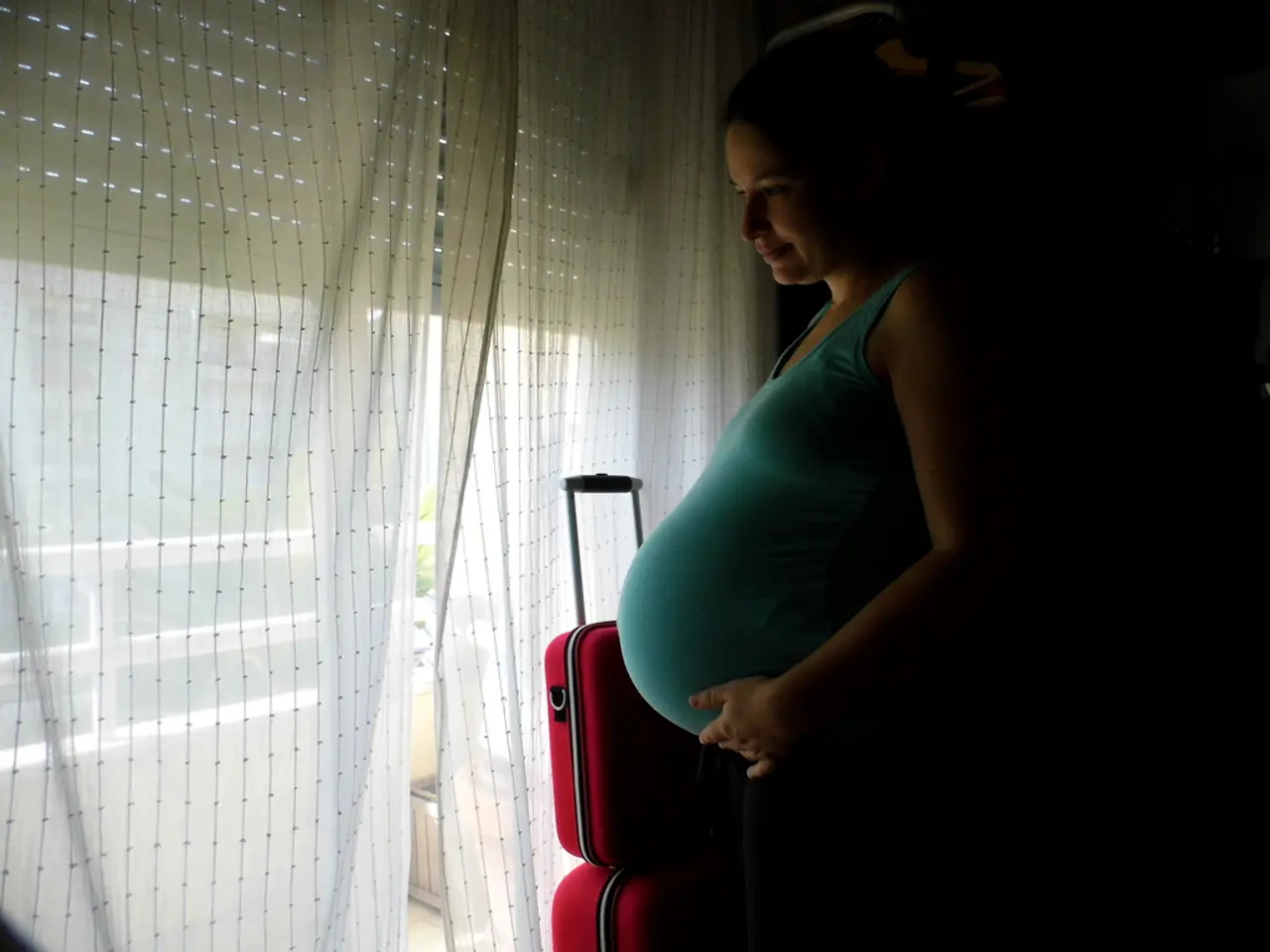Homemade Pregnancy Tests: Varieties and Their Efficiency
In the quest for early pregnancy detection, many individuals turn to homemade tests, such as those involving salt, sugar, baking soda, or even everyday items like toothpaste and shampoo. However, it's essential to approach these methods with caution, as they lack scientific evidence supporting their effectiveness.
One such test, the toothpaste pregnancy test, involves combining a few drops of urine with white toothpaste. If foaming occurs or the color changes, the test result is positive. Yet, little scientific evidence suggests that this method is reliable [1][2]. Similarly, the shampoo test, which suggests that hCG causes shampoo to foam or bubble, has no supporting evidence [3].
Other methods, like the salt test or the sugar test, are also popular but produce unreliable and inconsistent results. The salt test, which involves mixing equal parts of urine and salt, and the sugar test, where equal parts of sugar and urine are combined, are based on anecdotal reports and assumptions, but they have not been proven in controlled scientific studies [1][3][4].
Fertility monitoring and awareness methods, such as basal body temperature (BBT) and ovulation detection, can help track ovulation and fertility, but they cannot definitively confirm pregnancy. BBT may shift with hormonal changes, but it is not a direct test for pregnancy [2].
The only reliable home pregnancy test is a commercially available test that detects hCG, a hormone released in early pregnancy [1][2][3]. These tests are accurate and are the only medically recommended ways to confirm pregnancy. Relying on homemade tests can lead to false positives or negatives, misleading results, and delays in seeking proper medical care [1][2].
It's important to note that while wheat and barley tests, and other folk traditions, have been passed down through generations, they lack scientific validation and lack clinical research data to confirm accuracy or reliability [1][2].
In the U.S., free or less expensive testing is often available for those concerned about the cost of prenatal care or pregnancy testing. Medical confirmation through certified pregnancy tests remains essential for reliability and healthcare [1][2][3].
In summary, while some may try these tests for personal or cultural reasons, scientific evidence strongly advises against using homemade pregnancy tests for accurate pregnancy detection. Medical confirmation through certified pregnancy tests remains essential for reliability and healthcare.
References: [1] Mayo Clinic. (2019). Home pregnancy tests. https://www.mayoclinic.org/tests-procedures/home-pregnancy-test/about/pac-20394930 [2] American Pregnancy Association. (2021). Basal body temperature chart. https://americanpregnancy.org/getting-pregnant/basal-body-temperature-chart/ [3] FDA. (2018). Pregnancy tests. https://www.fda.gov/consumers/consumer-updates/pregnancy-tests [4] NHS. (2020). How does a home pregnancy test work? https://www.nhs.uk/common-health-questions/pregnancy/how-does-a-home-pregnancy-test-work/
- Despite enthusiasm for homemade tests like the toothpaste pregnancy test and the shampoo test, there's no substantial scientific evidence to support their reliability [1][2].
- The toothpaste pregnancy test, involving urine and toothpaste, has no backing from scientific research [1][2].
- Similarly, the shampoo test, which hypothesizes hCG triggers shampoo to foam or bubble, lacks scientific support [3].
- The salt test and sugar test, both popular but inconsistent, are unproven in controlled scientific studies [1][3][4].
- Fertility monitoring methods like BBT and ovulation detection are useful for tracking ovulation and fertility, but they don't confirm pregnancy [2].
- The only certain method for detecting pregnancy at home is the commercially available test, which detects hCG [1][2][3].
- Reliance on homemade tests may lead to incorrect results, causing confusion and delays in seeking proper healthcare [1][2].
- While ancient folklore and traditions like wheat tests persist, they lack scientific validation and reliable clinical data [1][2].
- In the United States, free or low-cost pregnancy testing is available for those concerned about prenatal care costs [1][2][3].
- For assurance, it's essential to get medical confirmation through certified pregnancy tests [1][2][3].
- Overall, habitual use of homemade pregnancy tests isn't advised for accurate pregnancy detection since they lack scientific foundations [1][2].
- It's crucial instead to verify pregnancy through medically recommended certified pregnancy tests for reliable results and healthcare [1][2].
- Women's health and well-being are paramount, and in the context of pregnancy detection, taking a science-backed approach is essential [5].
- Additionally, like in other health-and-wellness aspects, relying on predictive science and evidence-based information is highly recommendable [6].




